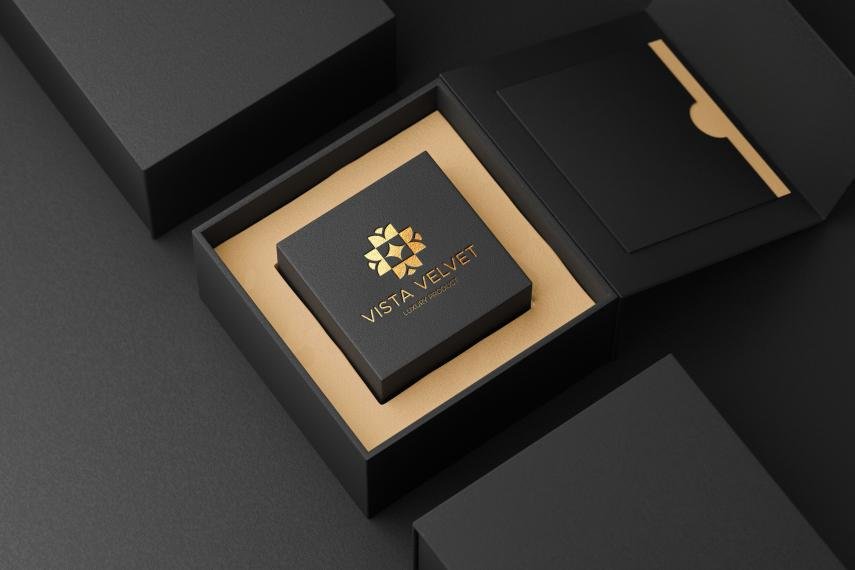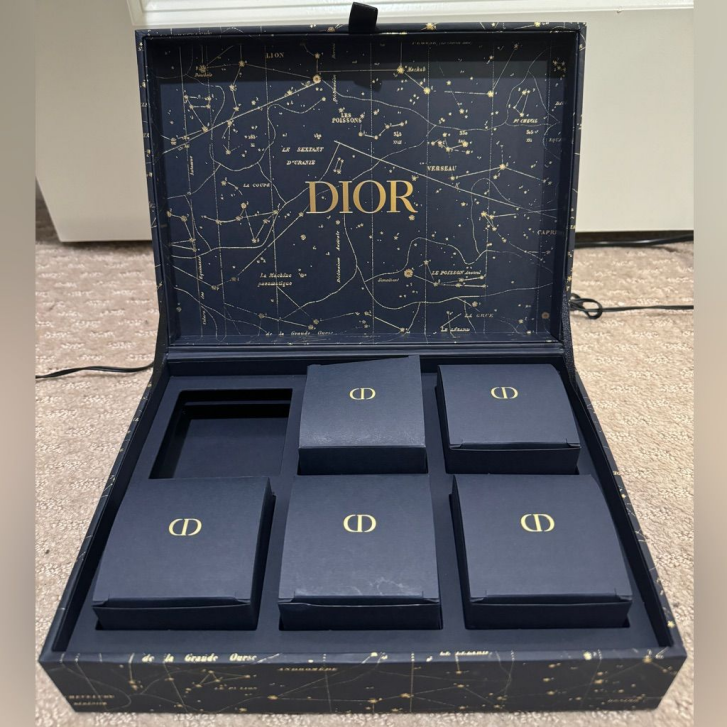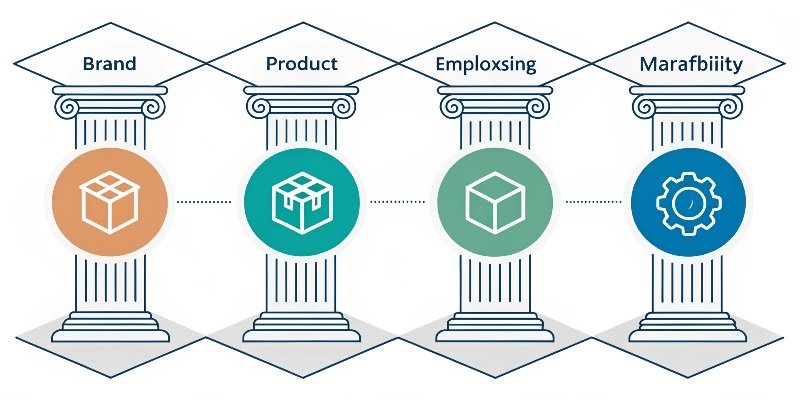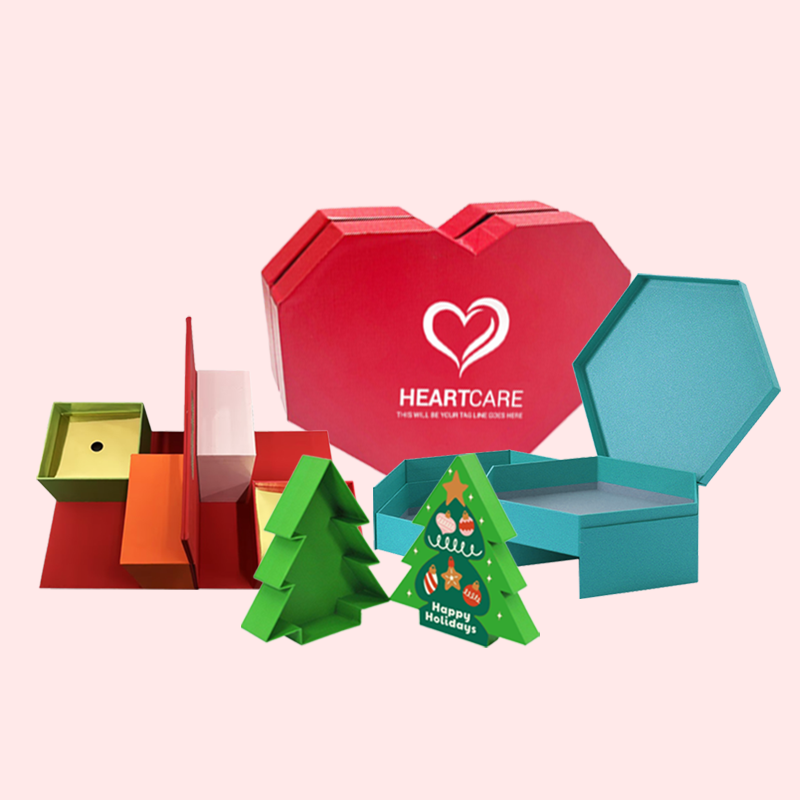Feeling stuck for new luxury packaging ideas? Your clients want something unforgettable, but inspiration is running dry. Let's look at some amazing examples to spark your creativity.
Inspiring luxury packaging often combines unique materials, interactive elements, and masterful storytelling. Think of Apple's minimalist unboxing, Tiffany & Co.'s iconic blue box, or limited-edition perfume boxes with intricate, multi-layered designs. These examples create a memorable experience that elevates the product inside.

Those are just a few great examples. But what makes them truly special is the seamless connection between the brand's identity and the customer's experience. It's more than just a box. It is the first physical interaction a customer has with the promise of luxury. I've spent over 16 years in this industry, and I've seen how the best designs tell a story before the product is even revealed. So, let's dive deeper and look at specific brands that get this right. We'll break down what makes their packaging so effective and how you can apply those lessons to your own designs.
What luxury brand has the best packaging?
Trying to name the best luxury packaging brand? With so many amazing designs out there, it's a tough call. Let's explore why one brand stands above the rest.
While many brands excel, Apple consistently sets the standard for the best luxury packaging. Their minimalist design, precise engineering, and satisfying feel create an unparalleled unboxing experience. It’s a masterclass in making simplicity feel premium, making the customer feel valued from the very first touch.

Apple’s approach is a lesson for every designer. They prove that luxury doesn't always mean complicated patterns or flashy colors. Sometimes, luxury is about perfection in simplicity.
The Philosophy of Simplicity
Apple’s packaging strips away everything non-essential. You get a clean white box, a beautifully printed product image, and the iconic logo. There's no extra text or confusing graphics. This minimalist approach does something powerful: it builds anticipation. It communicates confidence in the product. The brand doesn't need to shout because it knows the quality inside speaks for itself. This quiet confidence is the luxury. It tells the customer that they have purchased something special, something designed with care from the inside out. This has always inspired me at Giftspack. We guide clients to focus on the core message they want to send.
Engineering the Experience
The magic of Apple's packaging is also in its feel. It's not just designed; it's engineered. The way the lid lifts off with a specific amount of friction, the sound it makes, the perfectly designed paper tabs for easy opening. These are not accidents. They are calculated sensory details. I remember unboxing an early iPhone. The weight of the box and the slow, smooth reveal felt so deliberate. It was a huge lesson for me. It taught me that we're not just creating boxes, we are creating moments. This focus on sensory detail is what turns a simple container into a memorable ritual. It's an investment in the customer relationship.
What is an example of experiential packaging?
Your packaging looks good, but does it create an experience? Static designs often fail to engage customers deeply. A forgettable unboxing is a huge missed opportunity to build a lasting brand connection. So let's look at how interactive elements can turn a simple box into a memorable journey for the customer.
A great example of experiential packaging1 is the "Bloom Box2" by Christian Dior. When opened, the packaging unfolds like a flower, revealing the perfume inside. This interactive, multi-sensory reveal3 directly connects to the product's floral theme, creating a memorable and shareable moment for the customer.

Experiential packaging is one of the most exciting areas in our industry. It's where we move beyond just containing a product and start telling a story with structure and interaction.
Moving Beyond the Visual
A package that creates an experience engages more than just the eyes. It's about touch, sound, and movement. The Dior "Bloom Box2" is a perfect case study. The user doesn't just lift a lid. They initiate a process that mirrors a flower blooming. This physical interaction makes the experience active, not passive. As a designer, you should think about this journey. What does the customer do first? What is revealed next? I once worked with a client on a high-end jewelry box. Instead of a simple lid, we designed a box with multiple layers that had to be opened in a specific sequence. Each layer had a different texture. The customer feedback was amazing. They felt like they were discovering a hidden treasure.
Key Elements of an Experience
Creating an experience requires thinking about different components working together. It’s about building a small performance for the customer. Here are the core elements I always consider:
| Element | Description | Impact on Customer |
|---|---|---|
| Interaction | Requires the user to pull, twist, or unfold. | Creates active engagement4 and a sense of discovery. |
| Sound | A satisfying click, a quiet rustle, or magnetic closure. | Adds an auditory layer that signals quality. |
| Structure | Multi-layered or uniquely shaped boxes. | Builds suspense and makes the journey memorable. |
| Storytelling | Graphics or text that reveal a narrative. | Deepens the connection between the brand and product. |
How to make packaging stand out?
Your product is amazing, but it's getting lost on a crowded shelf. How do you grab a customer's attention? Generic packaging makes even the best products invisible. You're fighting for a few seconds of a consumer's focus. Let's explore unique materials, bold structures, and smart finishes that make your packaging impossible to ignore.
To make packaging stand out, focus on three key areas: a unique structural design5 that breaks from the standard box shape, the use of unconventional materials6 or textures, and bold, minimalist graphics. This combination creates visual intrigue and a tactile appeal that invites customers to pick it up.

In my 16 years running Giftspack, I’ve learned that standing out is about being different in a smart way. It’s not just about being loud. It's about being intriguing.
Breaking the Mold with Structure
The fastest way to get noticed is to have a different shape. Most products come in a standard rectangular box. Think about using a hexagon, a cylinder, or a box with angled cuts. A unique silhouette is a powerful tool on a retail shelf. It breaks the visual pattern and draws the eye. At Giftspack, we often start the design process by asking, "What shape best represents this product's spirit?" For a skincare brand focused on nature, maybe a box shaped like a smooth river stone works. For a tech gadget, a box with sharp, precise angles might be better. The structure itself becomes part of the branding.
The Power of Touch
Never underestimate the power of materials and finishes. Imagine a shelf of standard, glossy boxes. Now imagine one with a soft-touch matte finish7. Which one would you want to pick up? Using interesting textures is key. Things like embossed logos8, debossed patterns, spot UV gloss on a matte surface, or paper with visible fibers all invite touch. They communicate quality and careful craftsmanship. A simple tip for designers like Peter is to create a "material board" for every project. This helps clients see and feel how a special finish can completely elevate a design. It makes the packaging feel custom and luxurious.
What makes a packaging design successful?
You've created a beautiful design, but will it be successful? Aesthetics are only one piece of the puzzle. A design that isn't functional, brand-aligned, or cost-effective can fail, no matter how good it looks. A successful design masterfully balances four key pillars9: branding, functionality, customer experience10, and production feasibility11.
A successful packaging design12 excels in four areas. It must clearly communicate the brand's identity, protect the product effectively (functionality), create a delightful unboxing experience for the customer, and be manufacturable within budget. When these four elements work together, the design succeeds on all fronts.

Thinking about these four pillars is crucial for any designer. True success is found where great art meets smart execution. This is where collaboration between a designer and a manufacturer is so important.
The Four Pillars of Success
I've seen many amazing concepts that failed because they missed one of these pillars. A box can be beautiful, but if it doesn't protect the product, it's a failure. A design can be incredibly creative, but if it costs too much to produce, it will never be made. As a designer, you need to think like a brand manager, an engineer, and a production manager all at once. I often share this framework with my team and clients to make sure we are covering all our bases.
| Pillar | Key Question for the Designer | Why It Matters |
|---|---|---|
| Brand Identity | Does this design look and feel like our brand? | Ensures consistency and builds brand recognition. |
| Functionality | Does it protect the product during shipping and handling? | Prevents damage and customer disappointment. |
| Customer Experience | Is the unboxing process intuitive and enjoyable? | Creates a positive emotional connection. |
| Production Feasibility | Can we produce this efficiently and within budget? | Ensures the project is realistic and profitable. |
I've had designers come to me with ideas that are pure art. But they hadn't considered how the boxes would be assembled on a production line or how they would stack in a shipping container. This is where my team's experience comes in. The best projects are true collaborations. When a designer talks to their manufacturer early, we can find clever ways to bring a bold vision to life without breaking the budget. Success is making something beautiful that also works perfectly in the real world.
Conclusion
Ultimately, the most inspiring packaging tells a story. It balances bold creativity with smart functionality, turning a simple box into a powerful and memorable brand statement.
-
Learn about the significance of experiential packaging in creating memorable customer interactions. ↩
-
Discover how the Bloom Box creates an interactive experience that enhances the perfume's floral theme. ↩ ↩
-
Explore how multi-sensory reveals can enhance customer engagement and product appeal. ↩
-
Find out how active engagement can transform the unboxing experience into a memorable event. ↩
-
See innovative structural designs that break the mold and attract consumer attention. ↩
-
Discover how unconventional materials can elevate packaging and create a tactile experience. ↩
-
Explore the appeal of soft-touch finishes and how they enhance the tactile experience. ↩
-
Find out how embossed logos can add a premium feel to packaging designs. ↩
-
Learn about the essential pillars that ensure packaging design success. ↩
-
Understand the role of packaging in creating a positive customer experience. ↩
-
Explore the importance of production feasibility in ensuring packaging designs are practical. ↩
-
Discover the key elements that contribute to a successful packaging design. ↩






